Pod Point makes EV ownership so simple
September 10, 2020
There’s no denying the fact that with all the Government incentives, along with global pressures for a cleaner environment, the popularity of electric cars is picking up pace.
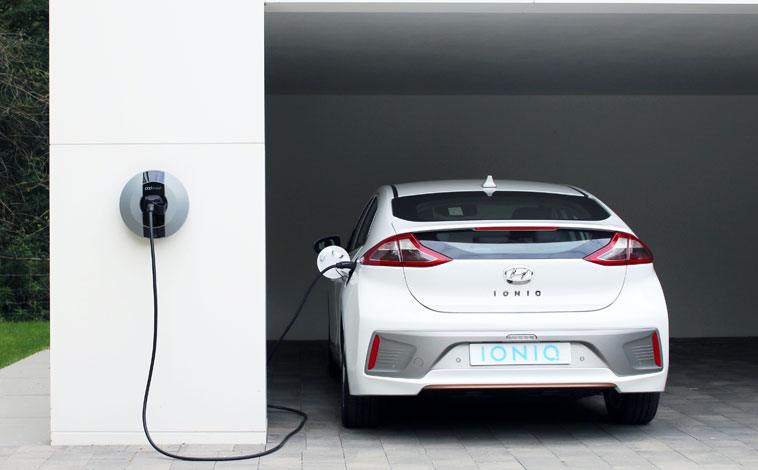
Long gone are the days when EVs looked and sounded like milk floats and had the least inspiring driving dynamics to match. But that was then and this is now with the likes of Jaguar, Audi and Mercedes all developing pure electric models. And, of course, the appeal of the all-electric Tesla brand is constantly gaining momentum.
It’s not just a rich person’s pipedream either with almost all the mainstream car makers producing EVs or plug-in hybrid vehicles throughout their range with more realistic price-tags.
On the downside, the cost of developing the batteries has meant the price of buying an EV remains quite high in comparison to traditional diesel or petrol powered vehicles.
But that higher purchase outlay can easily be offset by the costs of charging an EV, especially if you have a home-charger and can schedule the charge to be carried out overnight when energy costs tend to be lower, depending on the supplier and tariffs.
In addition, the Government does offer some assistance with the outright spend by means of a Plug-in Car Grant of £3,000 on vehicles up to £50,000. And there are new Benefit in Kind rates that really favour any business driver opting to go electric with a zero per cent rating for the first year.
Another area of concern for EV drivers that has been addressed recently is range anxiety. When the earlier electric cars arrived on the scene with their low driving range between charges, longer journeys had to be planned with military precision. These days the likes of the Kia Niro EV has a range of 282 miles between charges and one of the most popular EVs – the Nissan Leaf – can offer 239 miles on a full charge. Of course, these figures depend on a number of factors such as driving style, the weather and the traffic.
In addition, there has been massive investment to improve the EV charging infrastructure throughout the UK. Towards the end of last year, Nissan announced that there are now almost 1,000 more public places to charge an EV than there are forecourts to fuel up.
Kalyana Sivagnanam, managing director, Nissan Motor (GB) Ltd., said: “We’ve moved beyond the early concerns of range anxiety with EVs now exceeding the vast majority of customer’s daily driving needs. The next challenge is for charging infrastructure to keep pace with the number of EVs on the road, and that the experience of recharging is as enjoyable and effortless as that of all-electric driving.”
With fast charging meaning many car battery levels can be boosted to about 80 per cent in the time it takes to order and drink a coffee at a motorway service station, it seems EV drivers have all bases covered.
But, with the most convenient and cheapest method of charging coming via a home charger, how do you go about getting one fitted? Where do you start?
There are a number of companies that offer the service and some or all of the cost may even be covered by the car manufacturer. We spoke with one of the UK’s largest operators Pod Point, which was founded by Erik Fairbairn in 2009, and employs more than 200 people.
The company supplies chargers both here in the UK and in Norway and to date has sold more than 69,000 units. And demand is growing at quite a pace to match the increased popularity of EVs.
James McKemey, Head of Insights, Pod Point, said: “The future of motoring is electric. That is now inevitable. Falling battery manufacturing costs will soon make the EV cheaper than its competition, a supportive global regulatory environment will further support its emergence. The superior performance and convenience of the product also means that we think there is no way it can be stopped in the next decade.
“There is likely to be a move towards more autonomous vehicles and/or autonomous vehicle functions. But these vehicles will also use electric drivetrains.”
So, what are the costs and how easy is the whole process? The answer is it couldn’t be simpler.
Firstly, you need to decide what sort of charge point you require with private homes offered the choice between a 3.6kW or 7kW (a 22kW is available if you have three phase power, which few homes have, but is generally best suited to business premises). Costs start from £799 and rise to £1,549 for the 22kW appliance but Pod Point will assist in getting the OLEV (EVHS) grant of £350 to bring down the total cost.
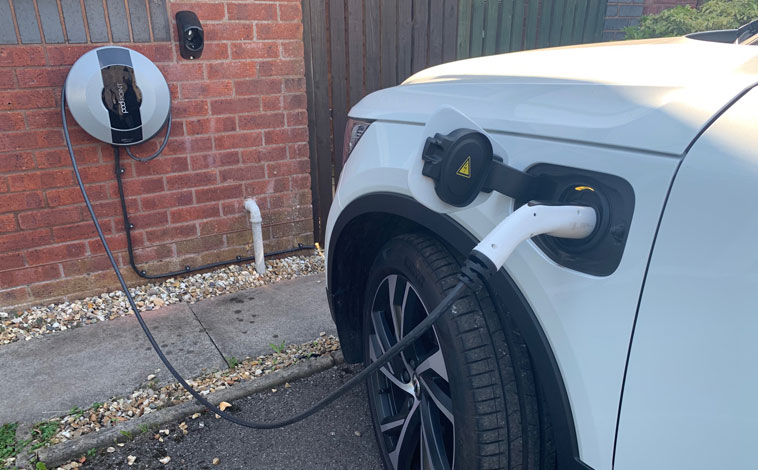
Next you need to decide whether you want tethered, which means it comes with an attached cable with a Type one or two connector that is compatible with almost every EV. Alternatively, you can opt for a universal socket that any car can plug into using its own cable.
And finally, you have to choose the location of the Pod Point home charger, preferably in close proximity to an electricity meter or junction box.
Then it’s just a case of contacting Pod Point and getting the ball rolling. We selected the most popular home charger – a 7kW Solo tethered model with a listed price of £909 (£559 with the grant deducted). This was ordered and fitted within 10 days.
The engineer, Jamie, fitted a box inside the electricity meter and ran a cable to the front of the house where the unit was positioned. The whole process took about two hours (including the time I pestered him with questions!)
The system has different coloured lights according to status. You simply plug in the car and wait for the light to go green. Then to end the charging simply disconnect from the car. The light will then go blue to indicate it’s on standby. There are other colours to indicate that the charge point is updating software etc, but generally it’s very simple to use.
The charger is connected to the property’s wi-fi to get automatic software updates over the air which allows the unit to be kept up to date without an engineer visiting. It can also be locked so nobody could come along and start charging a car without your permission.
There is a Pod Point App that offers insights into charging, costs, times etc. and customers can also use this App to locate the 3,000-plus public charging bays across the UK. As an added bonus, charging is free at some of these locations. Tesco recently launched a scheme offering free charging for a limited time while customers shopped in store. Elsewhere, you pay by the hour or for the energy used.
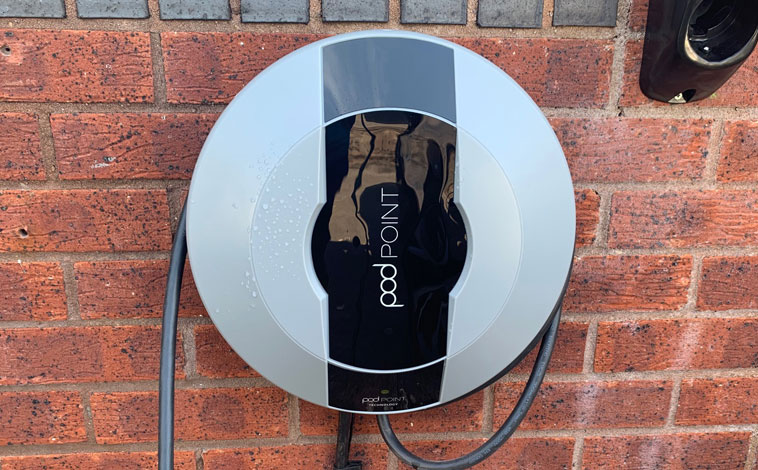
With the popularity of EVs on the rise, Pod Point has a vital role to play when it comes to the infrastructure as James McKemey explained: “Pod Point is a significant player in the provision of all types of charging infrastructure for cars and light commercial vehicles. Taken in combination these are the largest vehicle categories on the road, and a hugely important sector of the transport industry.
“Today, Pod Point is providing energy to a significant proportion of the first electrified vehicles in the fleet. As the electrification of this sector grows Pod Point’s role will be as a truly vital enabler of the electric transition and, in time, Pod Point will be a wholly vital provider of energy to a very significant proportion of the vehicles on our roads.”
Although EVs and plug-in hybrids still only account for a fraction of the total number of cars on our roads today, their popularity is growing and latest figures from the Society of Motoring Manufacturers and Traders indicate there are currently 144,335 plug-in cars and 92,913 pure electric vehicles in use at this time.
All Pod Point home charger systems are supplied with a three-year warranty as standard with the option to extend to five years when ordering.
* Pod Point is currently prioritising installations for key workers and drivers solely reliant on a full battery electric vehicle wherever possible.
Latest News

Toyota unveils its new Urban Cruiser
Toyota has officially launched its all-new compact SUV, the Urban Cruiser, at its [...]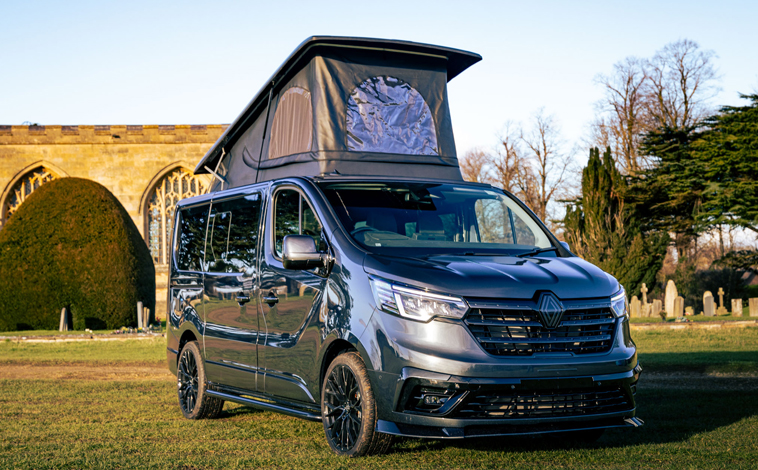
Carry on camping with Renault Trafic
The Renault Trafic is proving the perfect model for a brand new, off-grid, [...]
Barcelona players go track racing
Barcelona men’s football team players customised their new CUPRAs, after testing them during [...]
Suzuki Swift to Young Driver’s rescue
Young Driver, the UK’s foremost under-17s driver-training company, has just taken delivery of [...]
New Subaru Forester is right on track
Subaru UK & Ireland has announced the pricing and specifications for the all-new, [...]
Optional upgrades for the MINI family
Following the successful launch of the new MINI family, a range of additions [...]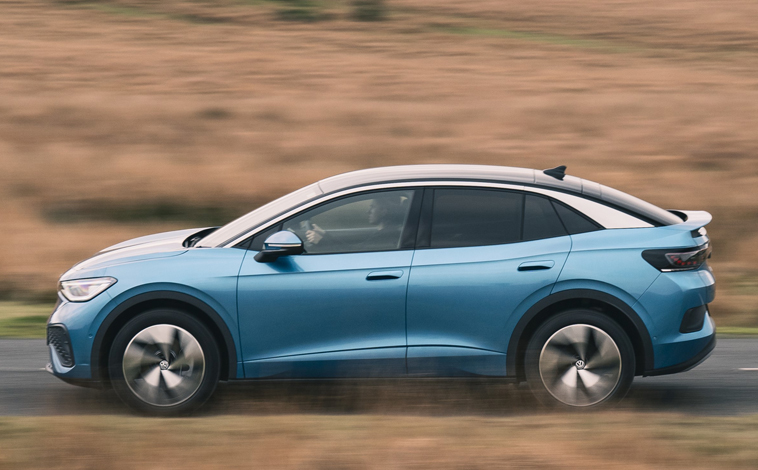
Save £1,000 when ordering a new VW EV
Anyone ordering a new Volkswagen electric vehicle between now and March 3 this [...]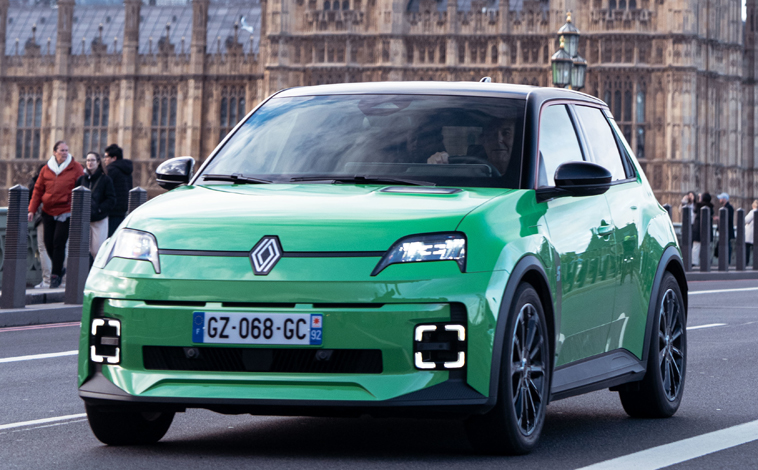
Get priority access to the new Renault 5
The Renault 5 E-Tech electric is available to order for R-Pass customers, giving [...]
Inster Cross has an adventurous side
Hyundai has announced pricing and specification for the Inster Cross, the all-new EV’s [...]
WWCOTY announces its finalists for 2025
The Women’s Worldwide Car of the Year (WWCOTY) has announced the winners of [...]
Prices announced for VW’s new Tayron
The all-new Volkswagen Tayron goes on sale in the UK on January 9 [...]
Skoda adds Design trim to Kamiq range
Škoda is building on the success of its award-winning Kamiq range by adding [...]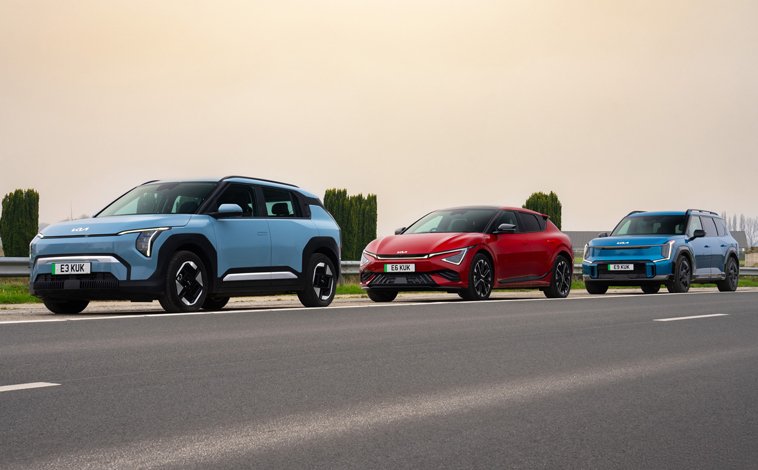
Kia celebrates 10 years of EV success
It’s incredible to think it’s been 10 years since Kia introduced its first [...]
INEOS partners with mountain rescue
INEOS Automotive partnered with Scottish Mountain Rescue (SMR) to help the charity deliver [...]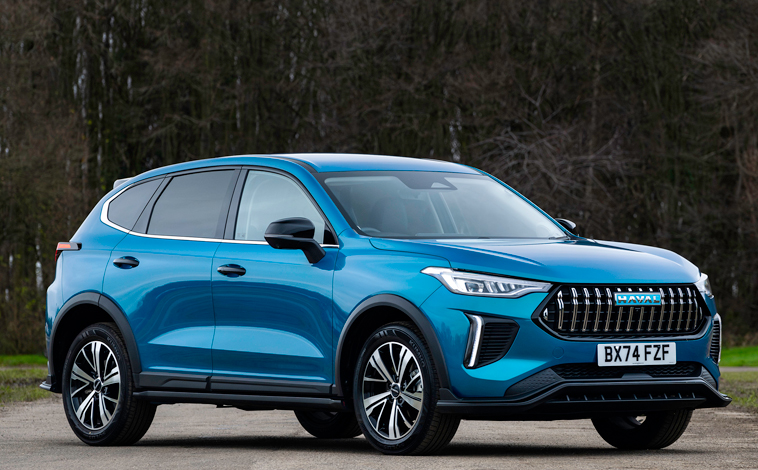
Prices revealed for BYD SEALION 7 model
BYD has announced the UK pricing for the SEALION 7 which will start [...]

